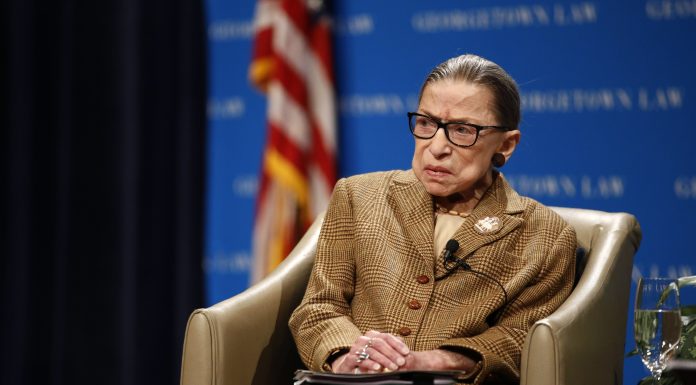(Headline USA) Justice Ruth Bader Ginsburg waited more than four months to reveal that her cancer had returned and that she was undergoing chemotherapy.
In an institution that zealously guards the justices’ privacy, only a justice can decide when an injury or illness should be made public.
Ginsburg, who was in and out of the hospital last week, said she intends to remain on the court, a decision that likely was influenced by the conservative nominee President Donald Trump would put up to replace her if she were to retire.
Ginsburg started receiving chemotherapy in May, a time of year when the justices typically take the bench at least once a week to announce decisions, and when the public can observe them in the courtroom.
Similarly, Chief Justice John Roberts suffered a forehead injury that required stitches on Father’s Day. In a normal year, the court would have met in public the next day and Roberts’ wound would have been easy to see.
Instead, opinions were released electronically, as they were throughout the spring and early summer. Only after inquiries from The Washington Post did the court confirm that Roberts had taken a fall that kept him in the hospital overnight.
Ginsburg issued a statement on July 17 saying that a medical scan in February revealed lesions on her liver, which a subsequent biopsy determined were cancerous. She declined an interview request from The Associated Press.
The lesions are the fifth time Ginsburg has dealt with cancer since 1999, when she first underwent surgery for colorectal cancer.
Surgeries for tumors on her pancreas and lung took place in 2009 and 2018, respectively, and Ginsburg underwent radiation therapy for a new growth on her pancreas last year.
Like other Americans, Supreme Court justices live and work with a range of ailments.
Justice Sonia Sotomayor has had diabetes since childhood. Also, both she and Justice Stephen Breyer injured their shoulders so badly they needed replacement surgery.
Sotomayor had a fall at home and Breyer suffered a bicycle accident. Both made prompt announcements of those incidents.
Her frail appearance may fool people, but Ginsburg has been remarkably resilient through her many health crises, which also have included broken ribs, infections and her own artery-clearing stent.
She had no surgery to remove the latest cancerous growth, and her treatment is ongoing.
She has said she will receive doses of the chemotherapy drug gemcitabine every two weeks.
Ginsburg’s statement came 10 days after she said another medical scan “indicated significant reduction of the liver lesions and no new disease.”
In that same period, the court also issued the last of its opinions and Ginsburg was in and out of the hospital for treatment of an infection that she said was unrelated to the cancer.
She maintained that she kept up with opinion writing and all other court work throughout her treatment and hospital stays.
Adapted from reporting by the Associated Press.

